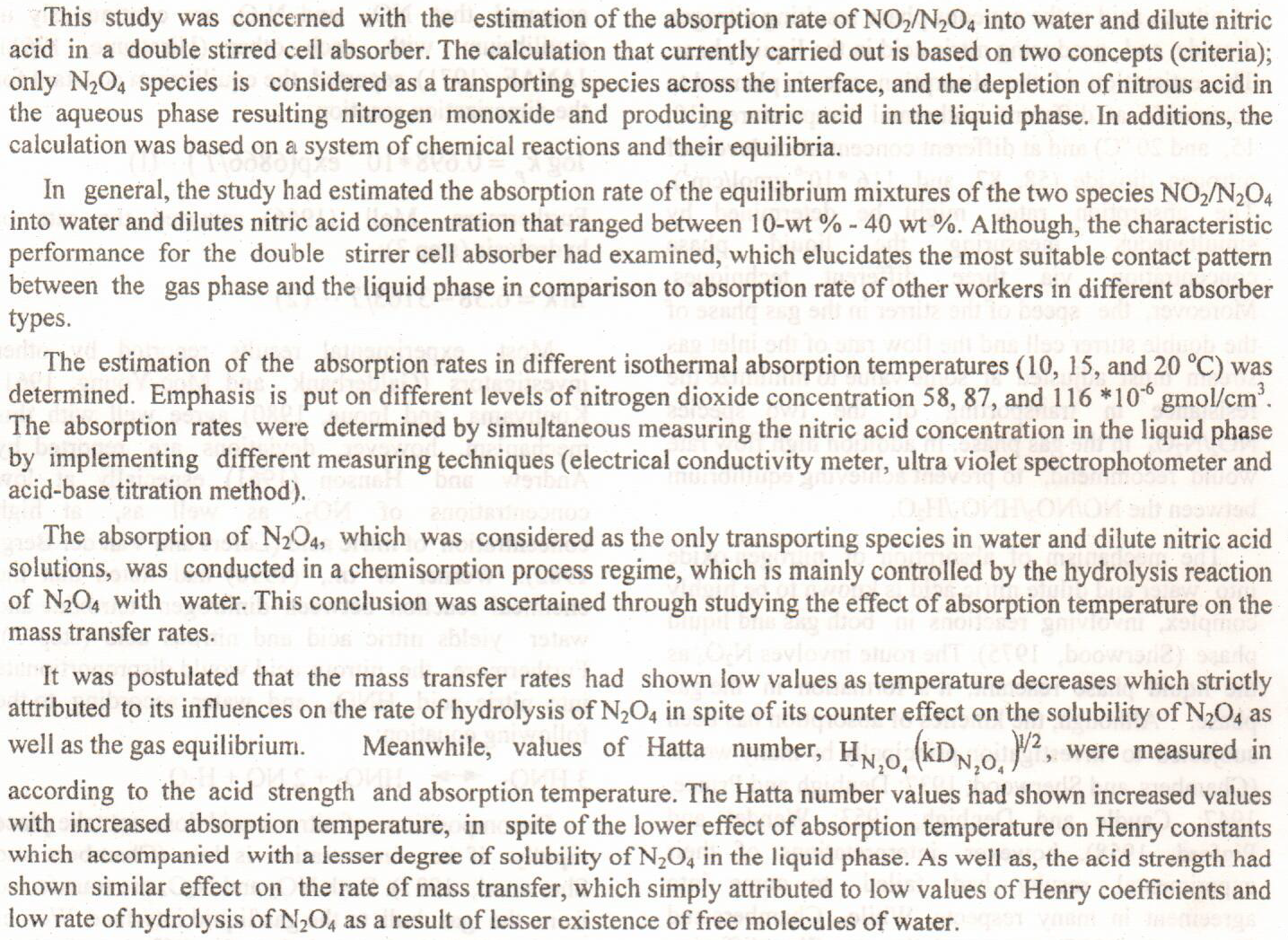
Hydrogen fuel is a good alternative to fossil fuels. It can be produced using a clean energy without contaminated emissions. This work is concerned with experimental study on hydrogen production via solar energy. Photovoltaic module is used to convert solar radiation to electrical energy. The electrical energy is used for electrolysis of water into hydrogen and oxygen by using alkaline water electrolyzer with stainless steel electrodes. A MATLAB computer program is developed to solve a four-parameter-model and predict the characteristics of PV module under Baghdad climate conditions. The hydrogen production system is tested at different NaOH mass concentration of (50,100, 200, 300) gram. The maximum hydrogen produc
... Show MoreThe research aims to improve the performance of the Directorate of Maysan water by reconciling the objectives of the employees of the directorate with the objectives of the Directorate itself, as well as to identify the strengths and weaknesses in the performance of the Directorate (Leadership - Individuals - Knowledge - Operations - Financial) and presented to experts and arbitrators of specialized, and the researchers have relied on the case study methodology as a descriptive approach is comprehensive analysis, and draws on more than one approach, method and scientific design, has been interviewed a number of experts in the Directorate Maysan's water Identify the weaknesses and strengths of the Directorate, the research has rea
... Show MoreThis paper presents the thermophysical properties of zinc oxide nanofluid that have been measured for experimental investigation. The main contribution of this study is to define the heat transfer characteristics of nanofluids. The measuring of these properties was carried out within a range of temperatures from 25 °C to 45 °C, volume fraction from 1 to 2 %, and the average nanoparticle diameter size is 25 nm, and the base fluid is water. The thermophysical properties, including viscosity and thermal conductivity, were measured by using Brookfield rotational Viscometer and Thermal Properties Analyzer, respectively. The result indicates that the thermophysical properties of zinc oxide nanofluid increasing with nanoparticle volume f
... Show More (2)
(2)
 (2)
(2)
In this study the thermal conductivity of the epoxy composites were characterized as function of volume fraction, particle size of fillers and the time of immersion(30,60,90)days in water .Composites plates were prepared by incorporating (bi-directional) (0º-90º) glass fiber and silicon carbide (SiC) particles of (0.1,0.5,1)mm as particle size at (10%,20%,30%,40%) percent volume in epoxy matrix.
The composites shows slightly increase of the thermal conductivity with increasing volume fraction, particle size and increase with increasing the days of immersion in water. The maximum thermal conductivity (0.51W/m.K) was obtained before the immersion in water at 90 days for epoxy reinforcement by bi-directional glass fiber and SiC particl
Acne vulgaris is a very common, chronic disorder, involving inflammation of the pilosebaceous units that can be varied in presentation and difficult to treat. Inflammatory acne may yield both scarring and pigmentary changes so early and adequate therapy will, in all cases, decrease its severity and may entirely suppress this disease. Serratiopeptidase has anti-inflammatory, anti-edemic and fibrinolytic activity and acts rapidly on localized inflammation. Serratiopeptidase was added in aim to hasten acne resolution. During March to July 2010, A comparative study for a 50 healthy patient suffering from acne was divided into 2 groups: 1st group treated by common acne modalities and the 2nd one with same modalities
... Show MoreIn Baghdad city, Iraq, the traffic volumes have rapidly grown during the last 15 years. Road networks need to reevaluate and decide if they are operating properly or not regarding the increase in the number of vehicles. Al-Jadriyah intersection (a four-leg signalized intersection) and Kamal Junblat Square (a multi-lane roundabout), which are two important intersections in Baghdad city with high traffic volumes, were selected to be reevaluated by the SIDRA package in this research. Traffic volume and vehicle movement data were abstracted from videotapes by the Smart Traffic Analyzer (STA) Software. The performance measures include delay and LOS. The analysis results by SIDRA Intersection 8.0.1 show that the performance of the roundab
... Show More (5)
(5)
 (5)
(5)
From the sustainability point of view a combination of using water absorption polymer balls in concrete mix produce from Portland limestone cement (IL) is worth to be perceived. Compressive strength and drying shrinkage behavior for the mixes of concrete prepared by Ordinary Portland Cement (O.P.C) and Portland limestone cement (IL) were investigated in this research. Water absorbent polymer balls (WAPB) are innovative module in producing building materials due to the internal curing which eliminates autogenous shrinkage, enhances the strength at early age, improve the durability, give higher compressive strength at early age, and reduce the effect of insufficient external curing. Polymer balls (WAPB) had been used in the mixes of thi
... Show More (7)
(7)
 (1)
(1)
The current study suggested a thermal treatment as a necessary proactive step in improving the adsorption capacity of bio-waste for contaminants removal in wastewater. This approach was based on the experimental and histological investigation of biowaste pods shell. This investigation showed that these shells compose of parenchyma cells that store secondary metabolites compounds produced from cells were exhibited in present study. The results also reported that these compounds are extracted directly from the cells as soon as they are exposed to an aqueous solution, hampering their use as an adsorbent material. The increase in the weight of bio-waste adsorbent at unit liquid volume increases the production of secondary metabolites compounds
... Show More